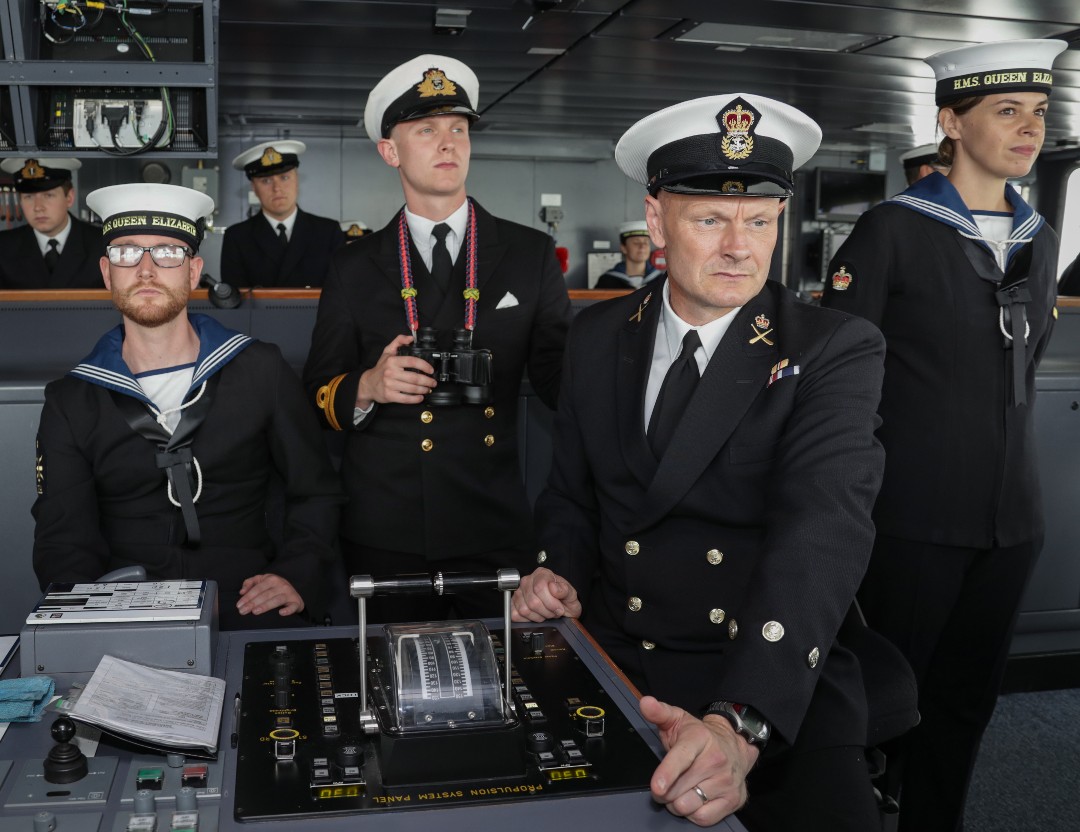According to new research, the UK’s wind and marine energy industry is set for significant jobs growth over the next ten years. Rob Murphy, Head of Research at Energy & Utility Skills, explains…
The two-part study, published by Energy & Utility Skills (EU Skills) and RenewableUK and entitled “Working for a Green Britain”, looks back at the extraordinary growth in jobs over the last four years and goes on to forecast the number of job opportunities that may arise under three scenarios for growth.
The wind energy industry in the UK has has almost doubled in size over recent years; from an estimated 4,800 in 2007 to 9,200 in 2010. This growth has been largely fuelled by growth in offshore aspect of the industry.
Across both wind and marine energy technologies, around 10,600 people are currently employed in a wide variety of roles ranging from planning and developing new sites, through to the design, manufacture, installation and maintenance of the equipment on site. Due to activities that are undertaken by companies in this industry, a large proportion of the jobs currently require a degree or equivalent. This is particularly the case in the marine energy industry where research and development is still the principle activity. However, the offshore wind industry offers far more opportunities for technician-level skills (e.g. vocational qualifications and HNCs/ HNDs).
All this activity is supported by a workforce who provides essential services such as technical and environmental consultancy, legal and insurance services, as well as transport. This workforce is estimated to be around 10,500 workers.
Employment levels and the types of jobs that are carried out vary by technology:
Large Onshore Wind
There are currently around 6,000 employees in this industry, principally in the planning and development of sites. Around one-in-five are employed in the operation and maintenance of sites once they become operational. One-quarter of companies currently report having vacancies that are proving hard-to-fill, mainly in areas such as project management, electrical engineering, electricians, sales, ornithologists and ecologists.
Small-Scale Wind Systems
Currently employing only around 600 people, the vast majority of which being employed in the development, manufacture and installation of equipment. Due to the nature of the technology, only a small workforce is required to maintain the installed equipment once it’s on site. One-fifth of companies currently report having vacancies that are proving hard-to-fill, mainly in areas occupations similar to those listed above for large onshore wind.
Offshore Wind
3,100 people are currently employed in this industry and, if current Government policy continues, there is the potential for significant growth over the coming decade. Currently, employment is concentrated in the construction and installation of turbines. However, as the industry matures, it is hoped that more manufacturing of turbines will take place within the UK at the same time as operations and maintenance becomes as increasingly important activity.
One-quarter of companies currently report having vacancies that are proving hard-to-fill, mainly in areas such as project management, electrical and wind power engineering, environmental impact assessment, sales, ornithologists and ecologists. There are a large number of transferable skills learnt and demonstrated by high calibre ex-military employees in their former roles that make them excellent candidates for positions in the sector.
In the wind industry, a key imperative is to increase the proportion of turbines that are manufactured within the UK. Currently, most turbines are imported from Germany, Denmark and Spain, where the industry is more established. Should moves to increase manufacturing capacity prove successful, there will be significant employment opportunities throughout the manufacturing supply chain.
Marine Energy
There are currently around 800 employees in this relatively immature industry. However, technology development is moving fast, with full-scale testing of prototypes being installed and some innovative devices reaching the pre-commercial stage. Hard-to-fill vacancies are a serious problem for marine energy companies, with nearly 40% reporting that they have such difficulties. Vacancies in areas such as hydrodynamic modelling, aerodynamic mechanical engineering, hydrographic surveying, environmental consultancy, subsea design, ornithology and ecology are proving particularly difficult to fill.
Although the wind and marine energy industry is relatively small when compared to other sectors of the economy, it is becoming increasingly important as the UK aims to reduce its carbon emissions by shifting towards being a more low carbon economy. As a result of this environmental necessity, with significant support from both the general public and Governments of the UK, the outlook for the industry over the coming ten years is very bright indeed.
Using a set of three different scenarios (high, medium and low levels of growth), EU Skills has developed a series of employment forecasts for the industry through to 2021. Each scenario is based on a number of assumptions which are crucial to future development of the industry.
Under the medium scenario employment is estimated to triple from its current level of 10,500 to around 32,700 employees by 2021. If we include the essential support services, employment could increase from 21,000 to over 88,000. However, this level of growth can only be achieved if Government ensures that the economic environment promotes investment, and companies and individuals invest in themselves to gain the necessary skills to deliver this future.
This medium scenario would see the UK becoming a major base for offshore, small wind and marine energy. The single largest sector for new employment would be in the manufacturing and design of equipment, which could see employment growth of over 22,000 employees by 2021.
Planning and development activity is already peaking for some technologies (such as offshore wind, which is currently going through planning and development for Round Three), so employment in this occupational area is anticipated to increase at a modest rate, drawing in an additional 1,300 jobs by 2021.
Growth in construction and installation is expected to be modest, as the relatively short timeframe for renewable energy installation projects will allow construction workers to move from one project to the next. Nonetheless, a total of 5,600 new full-time positions could be created in this area. On-going operations and maintenance roles are expected to build up significantly over this time for each of the technologies, leading to an additional 13,500 new jobs.
Over the next ten years, specialist support services shift from being predominantly related to onshore wind to being associated mainly with offshore wind and marine energy (in near-equal proportions). These roles are expected to account for around 7% of jobs in the sector by 2021.
The occupations and skills that will be needed in the industry as a result of this boom in jobs include:
Technical Occupations:
Construction Manager, Ecologist, Electrical Engineer, Environmental Consultant, Environmental Impact Assessor, Geophysical Surveyor, Hydro-Dynamic Surveyor, Noise Assessor, Offshore Structural Engineer, Ornithologist, Technical Planner, Power Systems Engineer, Project Engineer, Structural Design Engineer, Operations and Maintenance Technician.
Generic Occupations:
Commercial Manager, Contract Manager, Health & Safety Manager, IT Project Manager, Project Manager, QSHE Manager, Software Engineer, Supervisor, Sales.
Whether these employment opportunities become a reality will depend on a number of factors, particularly innovation, access to finance, planning policy, revenue incentives, access to the grid and political decision making. Equally as important is an adequate supply of suitably qualified workers (both young people and those looking to change careers) willing to take up the challenge of helping the UK reduce its dependency on fossil fuels for energy generation by ensuring that the wind and marine energy industry becomes world-leading success.
Without a skilled workforce, the future success of the renewable energy industry in the UK could be in the hands of our European competitors. This report shows the enormous potential that exists within the renewable energy industries to provide tens of thousands of permanent, well-paid jobs for the engineers, scientists, technicians and economists of the future – building on the enormous successes we have already achieved.
For further information about the careers in the energy and utilities industries please visit:
www.euskills.co.uk
www.thinkpowersector.co.uk
‘Working for a Green Britain’ (volumes 1 and 2) are available at: www.euskills.co.uk/low-carbon/research/

















